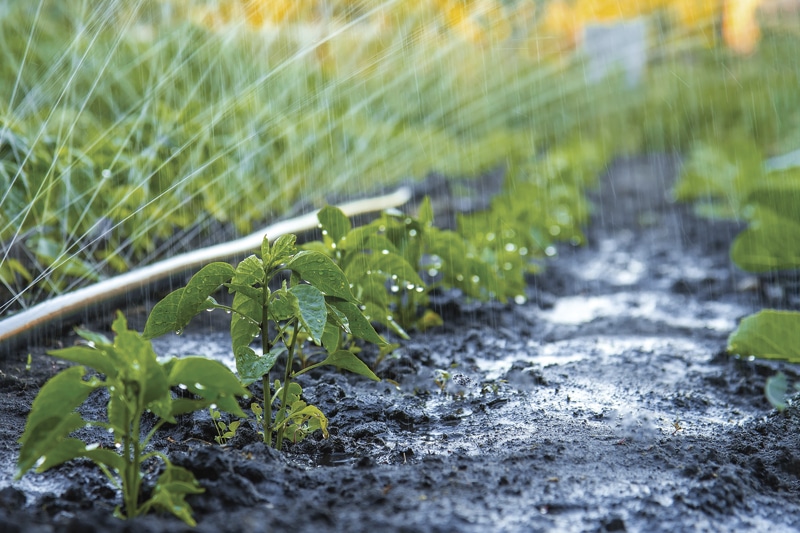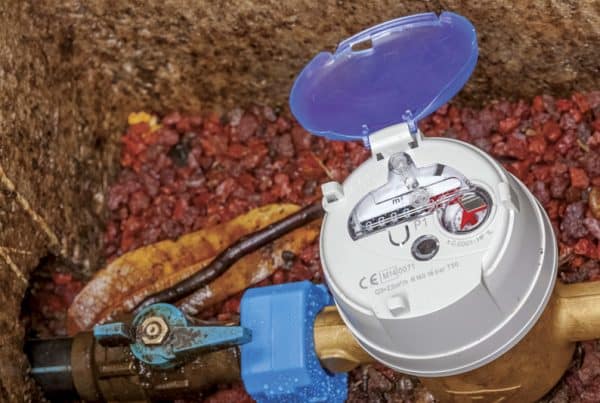The abundance of fresh water in Quebec may explain why the quality of water used for vegetable production is too often forgotten. However, it has a real potential to have a negative impact on yields and profitability. Thus, a water quality analysis should be considered as an investment, just like a soil analysis. Yet, too few vegetable producers take into account the characteristics of the water they use. Different criteria, such as pH, hardness or salinity, allow to define the properties and the quality of the source used. Knowing the value of these criteria allows you to adjust your practices. As an example, here is how a water quality analysis could optimize the production of transplants in your company.
For starters, high water salinity (electrical conductivity) increases the risk of root diseases, damping off, root burn, poor emergence and also water stress. It is therefore important to ensure that the electrical conductivity of the water does not exceed 0.6 mmho/cm. Thus, once the fertilizer is added, the salinity will be in the desired range of 1 to 2 mmho/cm. If the water used exceeds this value, it is preferable to opt for low salinity fertilizers or to change the source (e.g. rainwater). For an optimal follow-up, the acquisition of a salinimeter makes it possible to follow the evolution of the salinity of the substrate, by measuring the conductivity of a mixture of water and substrate with proportions of 2 for 1. Celery and cucurbits, for example, are particularly sensitive.
Subsequently, it is essential to maintain the pH between 5.5 and 6.5. Outside these values, the availability of elements, the quality and the growth of the seedling are affected. A low pH makes molybdenum and phosphorus less available, while a high pH affects the absorption of iron and boron. Second, alkalinity is another important measure. This is the amount of carbonate (CO32-) and bicarbonate (HCO3-) in the water, which is given in ppm of CaCO3. A high concentration of these causes chlorosis, burns the leaf margin and slows down growth. In addition, an alkalinity that is too low means that the pH of the water changes too easily, promoting pH changes through fertilizers. The desired range for alkalinity is 60-100 ppm (CaCO3). In the Montérégie-Ouest, the pH and alkalinity of the water are frequently higher than 7.5 and 250 ppm for most wells. This means that corrections are very often justifiable. The addition of acid to the irrigation water allows to adjust the pH and to decrease the bicarbonate rate. Be careful! Different acids can be used and the choice is important. For example, if more than 7 liters of phosphoric acid are added to 100,000 liters of water, the excess phosphorus will cause water loss.
Finally, total water hardness is an example that illustrates the different possible consequences of poor water quality. Hardness is defined as the amount of calcium carbonate (CaCO3) and magnesium carbonate (MgCO3) in water. CaCO3 and MgCO3 are lime, which is not very soluble. A low solubility explains why an increase of the pH and/or a decrease of the temperature causes the precipitation of it. The consequence of this lime deposit is the clogging of the pipes and the deposition of lime on the seedlings. Moreover, when something is dissolved in water, the chemical reaction causes a drop in temperature which, I remind you, favors the precipitation of lime. You will therefore understand that it is essential to take hardness into account, both when producing transplants and when using drip irrigation or pesticide sprays. The problem of line clogging can also occur in drip and spray water, which decreases the effectiveness of pesticides. This can be avoided by using an acidifying additive or by adding acid when dissolving fertilizers. Finally, I think the example of hardness has illustrated the importance of having your water tested.
Paul Laberge
Consultant at Uniag Coopérative







